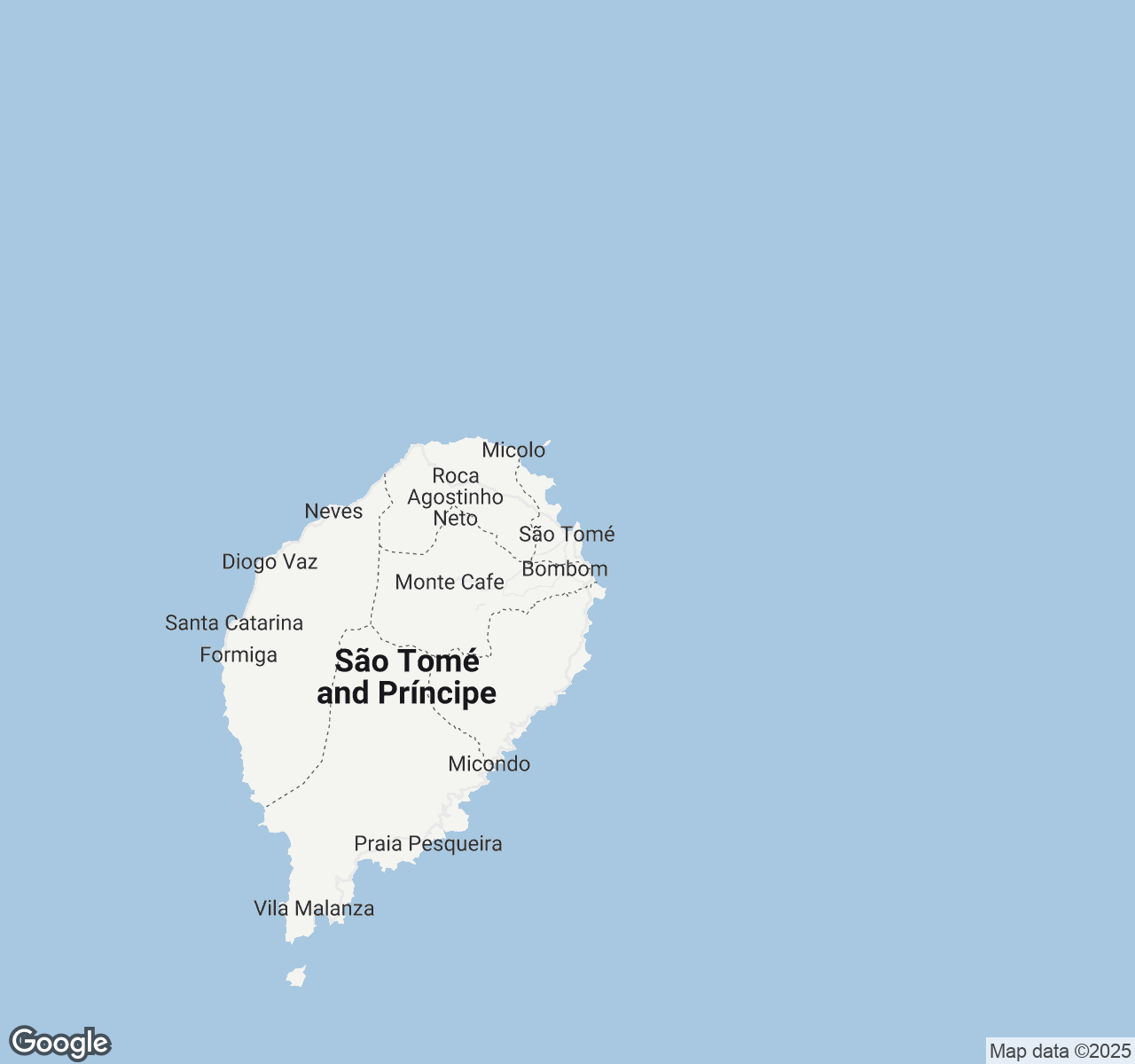
Things to Do in São Tomé
Discover the best of São Tomé
Plan Your Trip
Essential guides for timing and budgeting
Top Things to Do in São Tomé
Discover the best activities and experiences. Book now with our trusted partners and enjoy hassle-free adventures.
Your Guide to São Tomé
About São Tomé
located in the pristine waters of the North Pacific, Saotome emerges like a jewel from ancient volcanic origins, where emerald peaks pierce cotton-soft clouds and crystalline lagoons mirror the endless sky. This remote archipelago whispers tales of untouched great destination, where traditional fishing villages dot coastlines of black sand beaches and coral gardens teem with kaleidoscopic marine life. Time moves differently here—measured not by clocks but by the rhythm of gentle waves and the call of seabirds at dawn. Ancient stone temples stand sentinel among tropical forests where orchids bloom in impossible colors, while thermal springs offer sanctuary beneath star-drunk skies. Saotome isn't merely a destination; it's a return to wonder, where every sunrise feels like the world's first morning and every sunset paints the horizon in hues that exist nowhere else on earth.
Travel Tips
Transportation: Inter-island ferries run twice daily between main islands (book 24 hours ahead). Rent electric scooters for coastal roads; they're eco-friendly and perfect for narrow village paths. Taxis use meters but negotiate fixed rates for full-day excursions.
Money: Saotome Dollars (STD) are preferred; exchange at banks for better rates than hotels. ATMs are limited to main towns, so carry cash. Tipping isn't customary, but rounding up restaurant bills is appreciated.
Cultural Respect: Remove shoes before entering homes and temples. Bow slightly when greeting elders. Avoid pointing with fingers; use open palms instead. Photography of locals requires permission; traditional ceremonies are often sacred and off-limits to tourists.
Food Safety: Street food from busy stalls is generally safe; look for high turnover. Tap water is potable in towns but bring purification tablets for remote areas. Try local specialties like volcano-grilled fish and taro root bread.
When to Visit
Saotome's tropical climate offers year-round appeal, but timing significantly impacts your experience.Dry Season (May-October)brings perfect weather with temperatures of 75-85°F and minimal rainfall (2-4 inches monthly). This peak season sees 40-60% higher accommodation prices, but offers ideal conditions for diving, hiking, and beach activities. The Coral Festival (June 15-17) showcases traditional dances and marine conservation efforts.Wet Season (November-April)features warm temperatures (78-88°F) with heavy afternoon showers totaling 8-12 inches monthly. Accommodation costs drop 30-50%, crowds thin dramatically, and the landscape explodes in verdant beauty. The Spring Blossom Festival (March 20-22) celebrates volcanic soil fertility with flower displays and local cuisine.Shoulder periodsoffer the best balance: late April and early November provide decent weather with moderate pricing.Adventure travelersshould visit during wet season for dramatic waterfalls and lush photography.Beach loversandfamilieswill prefer dry season reliability.Budget travelersbenefit from wet season savings, whileluxury seekerscan enjoy exclusive experiences during quieter months. Typhoon season (August-September) requires flexible planning but rarely disrupts travel completely.

São Tomé location map